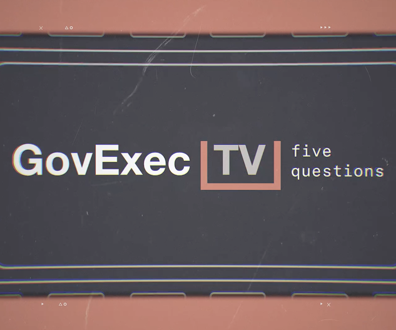Lights, camera, action in the 'Temple of Secrets'
Federal Reserve makes a dramatic move toward openness by inviting the media.
In a stunning if overdue leap into the modern media age, the Federal Reserve announced on Thursday that it will start holding televised press conferences to explain its monetary policy.
The first briefing, by Fed chairman Ben Bernanke, will be after the Fed's next policy meeting on April 27. After that, Bernanke will hold briefings after every other policy meeting -- in other words, about once a quarter.
To outsiders, and even some insiders, that may not sound like a big change. The president of the European Central Bank has been holding live press conferences on about the same schedule ever since the euro came into existence more than a decade ago.
But to understand how big a shift this is, consider where the Fed was coming from.
As recently as February 1994, not exactly the Stone Age, the Federal Reserve didn't even announce its decisions to raise or lower the benchmark federal funds rate.
Anyone who wanted to know what the Fed had decided had to find out from bond traders, who could immediately see what the Fed was doing through its open market operations. The Fed didn't issue any kind of statement, either about its policy decisions or its economic expectations.
Small wonder that the definitive book about the Fed, even in the 1990s, was William Greider's 1988 classic, Secrets of the Temple: How the Federal Reserve Runs the Country. The Fed truly was a marble temple of mystery. Though its chairman gave speeches and testified periodically before Congress, the Fed's decision-making remained a jealously guarded secret. No statements, no roster of how policymakers voted, no summaries of the debates, no transcripts of meetings even years after the fact.
The Fed took its first baby step toward openness in early 1994, when it began announcing its decisions to raise or lower overnight interest rates. Even then, if the Fed didn't make any changes, it didn't say anything. In 1995, the Fed began releasing transcripts -- with a five-year lag -- of Federal Open Market Committee meetings.
The next big step wasn't until 1998, when the central bank began disclosing major changes in its view of the economy.
Over the past decade, first under Alan Greenspan and then much more rapidly under Bernanke, the Fed began releasing more and more information about its deliberations.
The statement after each FOMC meeting began to include a short description of how policymakers viewed economic trends. The Fed began signaling future policy actions by including a description of its "bias'' toward easier or tighter monetary policy. It began talking about the balance of risks -- if the balance of risks was more weighted more heavily toward inflation, that was a warning to get ready for higher interest rates.
Bernanke, a former professor of economics at Princeton, had long argued as an academic that the Fed should become more open.
But soon after Bernanke succeeded Alan Greenspan as chairman in February 2006, Fed officials came under intense public and congressional pressure to open much more than they had ever dreamed.
The catalyst was the financial crisis, which bore down in full force in the fall of 2008. With major banks and Wall Street firms in severe danger of collapsing, the Fed participated in scores of bailouts involving trillions of dollars.
Those actions were entirely unprecedented and enormously controversial. Fed officials found themselves forced to explain not only their monetary policy but their emergency lending to banks; their swap deals with foreign central banks; and their purchases of vast amounts of mortgage-backed securities.
Rep. Barney Frank, D-Mass., the ranking Democrat on the House Financial Services Committee, frequently recalled his own shock upon realizing the full scale of the Fed's power during the crisis.
In September 2008, when the Fed and the Treasury Department teamed up to bail out American International Group, Frank asked Bernanke if he had enough resources to do the job. "I've got $800 billion,'' Bernanke responded.
In fact, Bernanke had much more than that. Armed with the power to print money, the Fed created trillions of dollars out of thin air.
Bernanke began working overtime to explain the Fed's efforts to the broader public. He began giving on-the-record interviews, starting with one for CBS's "60 Minutes." He spoke twice to the National Press Club, where he took questions from reporters in what Fed officials frankly described as a practice run for real press conferences. Perhaps Bernanke's most dramatic appearance was in a "town meeting'' hosted in Kansas City by "The Newshour," which carried extensive segments for several nights running.
At the same time, Fed officials fought doggedly to keep the details of their bailout efforts secret. That effort failed miserably. Bloomberg News sued the central bank almost immediately and was upheld by the U.S. Court of Appeals in Manhattan in March 2010. The Fed appealed to the Supreme Court, which rejected its plea on Monday.
But Fed officials had already opened up most of their books, at least regarding the crisis, as a result of pressure from Congress. With the central bank stepping in as a direct lender and pumping out money wherever it seemed to be needed, lawmakers in both parties demanded that it provide a detailed accounting.
Fed chairmen became accustomed decades ago to being publicly questioned for hours by congressional committees. But Fed officials never liked the idea of press conferences, possibly because they were much less controlled forums.
In its surprise announcement on Thursday that it would start holding press conferences, the Federal Reserve said that its goal was "to further enhance the clarity and timeliness" of its communications on monetary policy.






